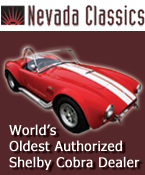 
 Main Menu
Main Menu
|
 Nevada Classics
Nevada Classics
|
 Advertise at CC
Advertise at CC
|
 March 2025
March 2025
|
| S |
M |
T |
W |
T |
F |
S |
| |
|
|
|
|
|
1 |
| 2 |
3 |
4 |
5 |
6 |
7 |
8 |
| 9 |
10 |
11 |
12 |
13 |
14 |
15 |
| 16 |
17 |
18 |
19 |
20 |
21 |
22 |
| 23 |
24 |
25 |
26 |
27 |
28 |
29 |
| 30 |
31 |
|
|
|
|
|
|
 CC Advertisers
CC Advertisers
|
|

09-16-2002, 08:12 PM
|
 |
CC Member

|
|
|
Join Date: Nov 2001
Location: Sugar Land,
TX
Cobra Make, Engine: I had lots of little Cobras until Oscar the house thief stole all of them
Posts: 231
|
|

 Not Ranked
Not Ranked
 Core Shift ???
Core Shift ???
I've read that it is bad but what is it ? Why is it so bad ? If it is the result of a virgin engine running 100k miles heating up and cooling off don't all motors have core shift ? A seasoned block is supposed to be better than a new block but there is a risk of core shift. Catch 22 huh ?

__________________
I Put a Jihad on You....
|
-
Advertising


09-16-2002, 08:28 PM
|
 |
Senior Club Cobra Member

|
|
|
Join Date: Jun 1999
Location: Fallbrook, CA USA,
CA
Cobra Make, Engine: Porsche 928 S4
Posts: 739
|
|

 Not Ranked
Not Ranked
fordracer,
Core shift refers to the casting process of the block. It has nothing to do with miles, heat cycles, etc. It is there from day one.
The point is, engine blocks are made with a process called "sand casting". To produce the water passages and other details of the block, "cores" are used. These cores can move during the pouring operation and move things like water passages, block reinforcement areas, etc.
I recommend that you do a search on sand casting (Google) and read up on the process. This will be much better than me trying to tell you how it works.
|

09-16-2002, 08:50 PM
|
 |
CC Member

|
|
|
Join Date: Nov 2001
Location: Sugar Land,
TX
Cobra Make, Engine: I had lots of little Cobras until Oscar the house thief stole all of them
Posts: 231
|
|

 Not Ranked
Not Ranked
 THANKS
THANKS
__________________
I Put a Jihad on You....
|

09-17-2002, 09:22 AM
|
 |
CC Member

|
|
|
Join Date: Mar 2002
Location: so cal,
Cal
Cobra Make, Engine: I used to fix them for a living
Posts: 2,563
|
|

 Not Ranked
Not Ranked
Richard is right on about "core shift"
You were mentioning about block seasoning as well. After lots of hot / cool cycles and tons of vibration, the residual stresses in the casting lessen. The block itself "un-stresses" itself after years of use. Some guys take new parts and have the stress relieved by the various methods: cryogenic, sub harmonic vibratory, etc. This is entirely unrelated to core shift, but important to understand nevertheless if you are building a motor on the ragged edge of parts failure.
__________________
In a fit of 16 year old genius, I looked down through the carb while cranking it to see if fuel was flowing, and it was. Flowing straight up in a vapor cloud, around my head, on fire.
|

09-17-2002, 05:31 PM
|
|
Club Cobra Member

|
|
|
Join Date: Mar 2000
Location: Chino Hills,
CA
Cobra Make, Engine: B&B 408W, TKO 600, 9" 4-link Truetrac, 13" X 1 3/8" curved vane frt disks
Posts: 205
|
|

 Not Ranked
Not Ranked
The real danger with core shift is when the water jacket cores that surround the cylinder walls shift during casting. Then the resulting wall section on that cylinder is thinner than spec. Typically when a builder says that a certain block type like a 351W, or a 460 can be over bored to .030, .060, or .080 safely, it is based on a statistically average wall thickness in the original block casting. Of course, an average is made up of highs and lows, so if the specific block you end up buying has one cylinder with a thinner than average wall, you could have problems, even at the low end of the over bore scale. This wall thickness can be checked with a special process, and when you consider how much money would be lost in a meltdown, it is probably worth the expense up front when doing a first class build.
|

09-17-2002, 05:45 PM
|
|
CC Member

|
|
|
Join Date: Jul 2002
Location: Portland, OR area,
OR
Cobra Make, Engine: Contemporary CCX33868 Sold. Just "playin' the boards now."
Posts: 634
|
|

 Not Ranked
Not Ranked
Great answers! I would add that I believe the process for checking is called a "Sonic Test".
Again it's only a worry if you're going much above stock bore....or supercharging. Virtually any block will safely take a .030" overbore without hitting water.
Add to the list of blocks that should be checked the 427 SO. They are maxed out at .030" overbore.
__________________
"If some is good, more is better.
And too much is just enough."
--Carroll Shelby
|

09-17-2002, 07:18 PM
|
 |
CC Member

|
|
|
Join Date: Nov 2001
Location: Sugar Land,
TX
Cobra Make, Engine: I had lots of little Cobras until Oscar the house thief stole all of them
Posts: 231
|
|

 Not Ranked
Not Ranked
Thanks for all the answers. I think I've got it figured out. 
__________________
I Put a Jihad on You....
|

09-19-2002, 07:05 PM
|
|
CC Member

|
|
|
Join Date: Mar 2001
Location: Indianapolis, Indiana, U.S.A.,
IN
Cobra Make, Engine: Home built, supercharged 544cu/in automatic
Posts: 924
|
|

 Not Ranked
Not Ranked
I just seen a bowtie block that had so much core shift that when boring it perpendicular to the crankshaft centerline a .080 boring was not enough to set things straight. The block was junk, so we sleeved it and my buddy sold it for truck use.
As a side point, ANY performance used block should be sonic checked. I've seen too many odd ball things happen when boring a block I guess.
cobrashock
__________________
Ron Shockley
|

09-29-2002, 08:19 PM
|
 |
Senior Club Cobra Member

|
|
|
Join Date: Sep 2000
Location: Holderness, NH, US of A,
NH
Cobra Make, Engine: CSX 4772 old iron FE
Posts: 5,499
|
|

 Not Ranked
Not Ranked
The windsor engines were compact, revolutionary light weight castings in their time. Consequently the cylinder walls were thin. The core shift can be visually seen on the underside of the bores as a lip that varies quite dramatically in wall thickness from one side to the other. I had a bore crack up a 302W cylinder and you couldn't see it. The engine constantly overheated and drank or puked coolant. As mentioned sonic testing is the only way to tell. The other thing to watch on old engines that has a similar effect to core shifts is leaving them for years partially filled with liquid (like rain) and they rust through from the back.
Cheers Nick
|

10-07-2002, 10:57 AM
|
|
CC Member

|
|
|
Join Date: Mar 2001
Location: Indianapolis, Indiana, U.S.A.,
IN
Cobra Make, Engine: Home built, supercharged 544cu/in automatic
Posts: 924
|
|

 Not Ranked
Not Ranked
mickmate - funny that I have mostly thought of engine blocks as being anvils in bone yards, I.E. - you can't screw them up. Good heads up. I'll have to remember that while I'm looking for a early Chrysler hemi in my junkyard raids.
__________________
Ron Shockley
|

10-07-2002, 06:09 PM
|
 |
Senior Club Cobra Member

|
|
|
Join Date: Sep 2000
Location: Holderness, NH, US of A,
NH
Cobra Make, Engine: CSX 4772 old iron FE
Posts: 5,499
|
|

 Not Ranked
Not Ranked
Good hunting, the last local cruise here we had a very inspiring Belvedere with Hemi power. It looked like Granpa's church car but chirped on each shift even on low idle. The rear end protested at sharp corners. Pictures in the parcel shelf of it dragging in 66 and 67 brand new, ran down to high 11's. Very impressive from a car that weight with an exhaust you could build a 289 chassis from! Time to stop looking at em and get back to work in the basement for the winter.
|

10-07-2002, 06:13 PM
|
|
CC Member

|
|
|
Join Date: Sep 2002
Location: Chicago, Oscar winner, my kind of town,
Posts: 614
|
|

 Not Ranked
Not Ranked
Not sure if you actually have a block which you were told had 'core shift'. If you do, and you're extremely attached to it for whatever reason, there is a process called offset boring which could let you compensate somewhat for core shift. First though, a sonic map is needed to assess just how badly things are off.
|

10-07-2002, 09:19 PM
|
|
CC Member

|
|
|
Join Date: Mar 2001
Location: Indianapolis, Indiana, U.S.A.,
IN
Cobra Make, Engine: Home built, supercharged 544cu/in automatic
Posts: 924
|
|

 Not Ranked
Not Ranked
Sizzler - To offset bore you have to do all the holes to do it right. Unless you have a high dollar block the cost to do that is to high in most cases. Offset boring also creates rod side clearance problems to if your not carefull. Better to find another junkyard block or buy a race block in the first place. The other thing you can do is sleeve the sucker, and I really have no problem with that, even on modified engines. I know its not popular though and most guys look down on that.
 
cobrashock
__________________
Ron Shockley
Last edited by cobrashoch; 10-08-2002 at 06:19 PM..
|

10-08-2002, 08:05 PM
|
 |
Senior Club Cobra Member

|
|
|
Join Date: Sep 2000
Location: Holderness, NH, US of A,
NH
Cobra Make, Engine: CSX 4772 old iron FE
Posts: 5,499
|
|

 Not Ranked
Not Ranked
I've had good luck with sleeving in the past, can't comment on offset boring but seems like more trouble and expense than the alternatives. I believe Gessford has run blocks hard that are all sleeved. On a crossbolted or four bolt motor the rigidity of crankshaft support helps alot.
|

10-08-2002, 09:41 PM
|
 |
Senior Club Cobra Member

|
|
|
Join Date: Jun 1999
Location: Fallbrook, CA USA,
CA
Cobra Make, Engine: Porsche 928 S4
Posts: 739
|
|

 Not Ranked
Not Ranked
Hi Folks,
On sleeved blocks.
We used to sleeve all of the 109E ford blocks. (Cosworth BDD) These were offset bored as well. We picked up 12% torque with offsetting the bores.
All of the F5000 Chevy blocks were sleeved. Traco were the first to do this due to failures with un-sleeved units.
There is nothing wrong with a sleeved block.
Matter of fact, all current F-1 engines are sleeved blocks. (Note: they are sleeved in some very trick ways. read Racecar engineering mag for details.)
|

10-08-2002, 10:56 PM
|
|
CC Member

|
|
|
Join Date: Mar 2001
Location: Indianapolis, Indiana, U.S.A.,
IN
Cobra Make, Engine: Home built, supercharged 544cu/in automatic
Posts: 924
|
|

 Not Ranked
Not Ranked
Richard - I have heard of offset boring to increase torque but don't quite understand how that works or why. I understand slight offsets can change the firing sequence so you can have more firing overlap on the crank. Is that it? I guess I am sorta asking for a short explanation on this because some racing sanctioning bodies have outlawed it. As for sleeves, all sleeves are not created equal, some can be bored out more. Thats all I am going to say about that.
  
cobrashock
__________________
Ron Shockley
Last edited by cobrashoch; 10-08-2002 at 11:09 PM..
|

10-09-2002, 11:14 PM
|
 |
Senior Club Cobra Member

|
|
|
Join Date: Jun 1999
Location: Fallbrook, CA USA,
CA
Cobra Make, Engine: Porsche 928 S4
Posts: 739
|
|

 Not Ranked
Not Ranked
Hi Ron,
Offset bores are a very common alteration to motors.
I cannot give you details as I am still involved with some engine folk and they would not look kindly on free information.
But, think of the offsets and the burn timing of the mixture in low rpm engines. (less than 10K) and you will understand the possibilities of offset bores.
You must think of overall timing events and the effective moment arms.
That is all I can say due to Non-Disclosure agreements.
|

10-09-2002, 11:43 PM
|
|
Senior Club Cobra Member

|
|
|
Join Date: Jul 2002
Cobra Make, Engine:
Posts: 15,712
|
|

 Not Ranked
Not Ranked
Richard,,,,
and just when it was starting to get real interesting........
Ernie
|

10-10-2002, 10:04 AM
|
|
CC Member

|
|
|
Join Date: Mar 2001
Location: Indianapolis, Indiana, U.S.A.,
IN
Cobra Make, Engine: Home built, supercharged 544cu/in automatic
Posts: 924
|
|

 Not Ranked
Not Ranked
Richard - Good explanation sort of about offset timed sequential firing. I never thought of it in terms of burn times. I'm not totally sure what you mean by the term effective moment arms or more spicific the word "arms". But you can bet I will find out. This is a rap I am going to start with some of my Indy car buddies here in Indy. I just happen to know the right engine guy to tattoo I think. Thanks!
cobrashock
__________________
Ron Shockley
Last edited by cobrashoch; 10-10-2002 at 10:07 AM..
|

10-11-2002, 08:17 AM
|
|
CC Member

|
|
|
Join Date: Sep 2002
Location: Chicago, Oscar winner, my kind of town,
Posts: 614
|
|

 Not Ranked
Not Ranked

Quote:
Originally posted by Richard Hudgins
Hi Ron,
Offset bores are a very common alteration to motors.
I cannot give you details as I am still involved with some engine folk and they would not look kindly on free information.
But, think of the offsets and the burn timing of the mixture in low rpm engines. (less than 10K) and you will understand the possibilities of offset bores.
You must think of overall timing events and the effective moment arms.
That is all I can say due to Non-Disclosure agreements.
|
OK, this is a new idea to me, but not, apparently to others. So searching this is what I'm understanding so far:
1) An easy way to see this effect, and banned in NHRA events, is reversing the piston in the bore. This reverses the built-in piston pin offset the manufacturers design in to quiet piston-slap in the bore and effectively, offsets the piston-rod assembly.
2) A more involved process is increasing the effective angle of the engine from say, a 90 degree V-8 to a 95 degree V-8. The effect of this has been documented, but as near as I can tell, most feel the effect is more from reduced friction on the thrust walls than from any "moment arm" effect. This has also been suggested as a means of unshrouding valves and better arranging things topside within the firing area...sort of advancing a cam if the grind is slightly off...more involved and nowadays, why not just get a decent head instead of disassembling an engine and going through all this.
3) A still more involved process, and an ancient one is this:
Quote:
Originally posted by H. Franks
Ford/Merc flatheads had the cranks offset more than 1/4 inch to the right side. In other words when you intersected the centerlines of the 90 degree bores, it was NOT on the centerline of the crank. Naturally the cam was offset as well to be over the crank, and the valves on the left bank had to be canted 5 degrees and the deck on the right bank had to be slightly higher to compensate for the offset.
Look at it this way; when a bicycle pedal is at the top (perpendicular to the ground) it's hard as hell to get it moving. But if you move it forward an inch or two it is much easier because you have a better angle on the pedal crank. So the flathead was not wasting a lot of energy trying to get over the hump, but was pushing the rod downward instead of trying to push it sideways.Also the piston goes down noticeably faster on the down stroke than coming up.
Obviously you can't offset a crank if the block wasn't cast that way, but you can get the same effect by offsetting the bores. I guess you can do it two ways. Either keep the the same centerline and bore off center; left bank toward the outside of the block and right bank toward the inside, or cock the bores a few degrees off the center line and both toward the right. Either way you would stay 90 degrees.
In an earlier posting I talked about a guy who is running an under 300 inch flathead dragster at 7.7 sec and 175 mph; maybe faster now. I doubt that he is making 500-550 hp even on nitro, so the only thing I can think of is the natural advantage of the offset crank + the incredibly long stroke and rods of the flatheads. You would probably have to make 2-300 more horsepower on an overhead to get times like that.
|
Now does any of the above make any kind of sense?
How does the effect graph out? Does it increase from 90 degrees to 135 degrees, or go up steadily all the way to Boxster configuration?
Help?

|
 Posting Rules
Posting Rules
|
You may not post new threads
You may not post replies
You may not post attachments
You may not edit your posts
HTML code is On
|
|
|
All times are GMT -7. The time now is 09:56 AM.
|


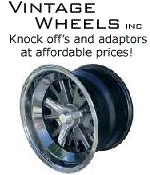


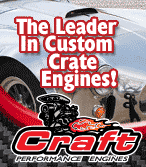
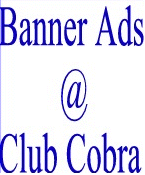
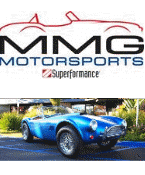


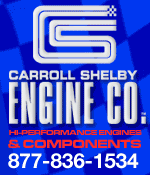








 Linear Mode
Linear Mode



